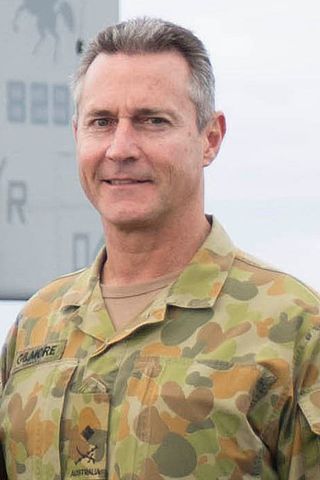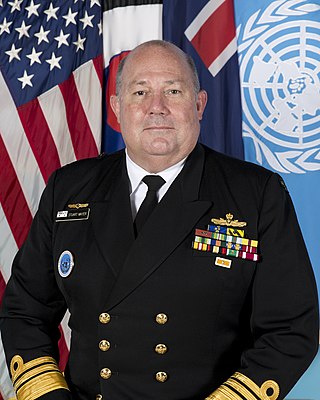Related Research Articles

Anzac Day is a national day of remembrance in Australia and New Zealand that broadly commemorates all Australians and New Zealanders "who served and died in all wars, conflicts, and peacekeeping operations" and "the contribution and suffering of all those who have served". Observed on 25 April each year, Anzac Day was originally devised to honour the members of the Australian and New Zealand Army Corps (ANZAC) who served in the Gallipoli campaign, their first engagement in the First World War (1914–1918).

The Special Air Service Regiment, officially abbreviated SASR though commonly known as the SAS, is a special forces unit of the Australian Army. Formed in 1957 as a company, it was modelled on the British SAS with which it shares the motto, "Who Dares Wins". Expanded to a regiment in August 1964, it is based at Campbell Barracks, in Swanbourne, a suburb of Perth, Western Australia, and is a direct command unit of the Special Operations Command.

The Australian contribution to the war in Afghanistan has been known as Operation Slipper (2001–2014) and Operation Highroad (2015-2021).

The Australian War Memorial is Australia's national memorial to the members of its armed forces and supporting organisations who have died or participated in wars involving the Commonwealth of Australia and some conflicts involving personnel from the Australian colonies prior to Federation. Opened in 1941, the memorial includes an extensive national military museum.
The Meritorious Unit Citation is a collective group decoration awarded to members of Australian military units. It recognises sustained outstanding service in warlike operations. The Meritorious Unit Citation was created in 1991, along with the Unit Citation for Gallantry.
Sergeant Edward David "Ted" Smout OAM was an Australian soldier in the First World War. He was Australia's 6th last surviving World War I veteran.
Alexander William Campbell was the final surviving Australian participant of the Gallipoli campaign during the First World War. Campbell joined the Australian Army at the age of 16 in 1915, and served as a stores carrier for two months during the fighting at Gallipoli. He was invalided home and discharged in 1916. He later worked in large number of roles, was twice married and had nine children. He is the great-grandfather of actress, singer and model Ruby Rose.
Paul Medhurst is a former professional Australian rules football player who played for the Collingwood Football Club and the Fremantle Football Club.
Tenix is a privately owned Australian company involved in a range of infrastructure maintenance and engineering products and services to the utility, transport, mining and industrial sectors in Australia, New Zealand, the Pacific Islands, and the United States.

Lieutenant General Franklin Lee Hagenbeck is a retired United States Army officer who served as the 57th Superintendent of the United States Military Academy from June 2006 to July 2010. Previous to his assignment at West Point, he was the Deputy Chief of Staff, G-1 United States Army, Washington, D.C.
The Star of Gallantry (SG) is a military decoration awarded to personnel of the Australian Defence Force (ADF) and other persons recognised by the Minister for Defence. It is awarded for acts of great heroism or conspicuous gallantry in action in circumstances of great peril. It is the second highest of the military gallantry awards in the Australian Honours System, only surpassed by the Victoria Cross or Victoria Cross for Australia (VC).
The Medal for Gallantry (MG) is a military decoration awarded to personnel of the Australian Defence Force. It recognises acts of gallantry in action in hazardous circumstances. The MG was introduced on 15 January 1991, replacing the Imperial equivalent. It is ranked third in the Gallantry Decorations in the Australian Honours System. Recipients of the Medal of Gallantry are entitled to use the post-nominal letters "MG".

Project Protector was a Royal New Zealand Navy (RNZN) procurement project that was undertaken during the 2000s. At the start of the decade, the New Zealand government tasked the New Zealand Defence Force to develop an equal combat, peacekeeping, and disaster relief capability, in which the RNZN was to focus on conducting sealift operations and patrols of the Economic Exclusion Zone. A series of reviews found that the RNZN was lacking in these capabilities, and Project Protector was established to acquire three new ship types: a single multi-role sealift ship, two offshore patrol vessels, and four inshore patrol vessels. After a two-year information-gathering and tender process, an Australian company, Tenix Defence, was selected as the primary contractor.

The Anzac Day match is an annual Australian rules football match between Collingwood and Essendon, two clubs in the Australian Football League, held on Anzac Day at the Melbourne Cricket Ground (MCG).
Carlo Salteri was a prominent Australian businessman, mechanical engineer, founder of Tenix and co-founder of Transfield.

Major General Peter Warwick "Gus" Gilmore, is a retired senior officer of the Australian Army. A graduate of the Royal Military College, Duntroon, he was commissioned into the Royal Australian Infantry Corps in 1983 and spent much of his career in special forces. He commanded the Special Air Service Regiment (2001–02), led the first contingent of the Australian Special Operations Task Group in Afghanistan (2001–02), was responsible for the Coalition Advisory Support Team in Iraq (2005–06), and commanded International Security Assistance Force Special Operations Forces (2009–10). Following promotion to major general he held a succession of senior appointments, including Special Operations Commander Australia (2011–13), Deputy Chief of Army (2013–15), and Commander Forces Command (2015–16). His final appointment was as Head Military Strategic Commitments Division from 2016 to 2019.
Cameron Stewart Baird, was a soldier in the Australian Army who was posthumously awarded the Victoria Cross for Australia, the highest award in the Australian honours system. Baird was the fourth person to receive the Victoria Cross for Australia during Operation Slipper.

Vice Admiral Stuart Campbell Mayer, is a retired senior officer of the Royal Australian Navy. He joined the navy via the Royal Australian Naval College at HMAS Creswell in 1984 and qualified as a Principal Warfare Officer in 1994. He commanded HMAS Canberra (2002–04), HMAS Anzac (2007–09) and the International Stabilisation Force (2009–10), and deployed on operations to the Persian Gulf, East Timor, and the Arabian Sea during the Iraq War. He served as Commander Australian Fleet from 2014 to 2018, Head Force Design within the Vice Chief of Defence Force Group from 2018 to 2019, and Deputy Commander United Nations Command, based in South Korea, from 2019 to 2021. He retired from the navy in 2022 and was appointed a partner in Ernst & Young's consulting division.
Brigadier Ian Douglas Langford, is a retired senior officer of the Australian Army. He is a Distinguished Graduate of the United States Marine Corps Command and Staff College and the School of Advanced Warfighting. Langford was the Director General Future Land Capability for the Australian Army from 2018 until 2022; and previous to that was the acting head of Land Capability. He served as commanding officer of 2nd Commando, in which role he lead combat operations in Timor Leste, Afghanistan, Bougainville, Solomon Islands, Iraq, Israel, Lebanon, Syria, and the South-West Pacific; with command of Special Operations Command in Afghanistan. For his service, Langford was awarded the Distinguished Service Cross on three occasions – the only person to date to receive that honour.
References
- ↑ Member of the Order of Australia, 26 Jan 1996, itsanhonour.gov.au
Citation: "For exceptional service to the army in the field of Regional Force Surveillance." - ↑ "US honours SF commander". Army News. 1 August 2002. Archived from the original on 15 January 2003.
- ↑ Tenix Group makes new Corporate appointments, AIDN-VIC INC, NEWSLETTER No 10 of 2006, pg 4.
- ↑ Enhancing Reconstruction and Stabilisation – conference program, 14–15 Oct 2008, www.cimic.org.au. Tink's presentation